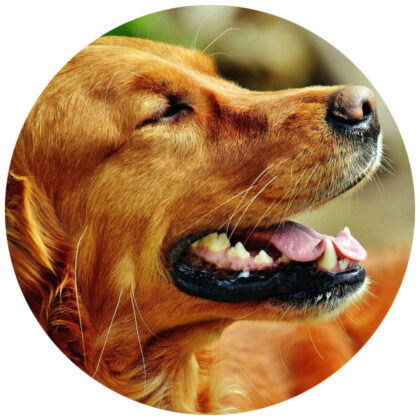 Many dog owners wonder what else they can do for their dog. When researching, they often come across the BARF feed concept, but unfortunately it mostly stays that way. It’s far too complex, too expensive and I feed it a super premium feed. So people continue to trust the industrial feed manufacturer, because the dog’s droppings are ok and otherwise it seems to taste good to him. Especially since the whole presentation of the food is great, so why should I change the food? At the latest after the first intolerance, or illness of the gastrointestinal tract, tartar and bad breath, many dog owners ask themselves whether it might not have something to do with the food. In the best case, the question is asked beforehand and our feed check is used.
Many dog owners wonder what else they can do for their dog. When researching, they often come across the BARF feed concept, but unfortunately it mostly stays that way. It’s far too complex, too expensive and I feed it a super premium feed. So people continue to trust the industrial feed manufacturer, because the dog’s droppings are ok and otherwise it seems to taste good to him. Especially since the whole presentation of the food is great, so why should I change the food? At the latest after the first intolerance, or illness of the gastrointestinal tract, tartar and bad breath, many dog owners ask themselves whether it might not have something to do with the food. In the best case, the question is asked beforehand and our feed check is used.
The results are usually more than frightening for mum and dad. “What have I done to my dog all these years?” is a sentence that we unfortunately hear very often here at DOG FIT. Sometimes the truth hurts and unfortunately the consequences of a diet that is not appropriate to the species are often just as painful – primarily for the dog.
Do I have to barf my dog? Surely that is very time-consuming and expensive?
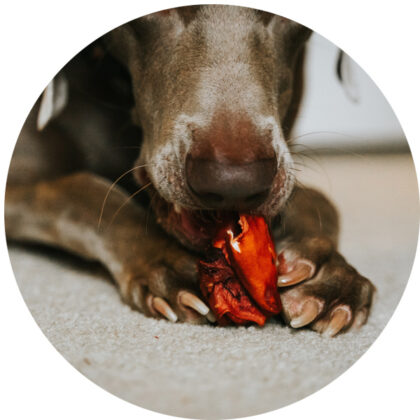
Of course you don’t have to, because fortunately there are two or three good animal feed manufacturers in Germany. And no, it is quite unlikely that you know them. Advertising, marketing and self-proclaimed nutritionists ensure that only the big brands are in the spotlight. The feed industry is a billion-dollar market and is less concerned with the well-being of your dog than with making as much money as possible with as little effort as possible. Why should the feed industry differ from the food industry?
Time-consuming and expensive? Wait a minute, a basic question: you got yourself a dog and didn’t find out beforehand what all goes with it? I don’t mean the dog school, the dishes, the bowl and the basket. But I mean the absolute basic need of every living being, nutrition. You most likely thought to yourself: Food? You can find them on every corner, in supermarkets, online or in pet shops. Something good is recommended to me, it shouldn’t be too expensive, but it should still be quite good food. You can also make it easy on yourself, it’s just a dog.
Oh, the time, yes a dog also needs activity. At first, a bit of dog school, walking on the leash twice a day and a little walk in the park at the weekend, I can manage that. Of course, only if it’s not raining and not too cold (my dog could freeze, no, that’s clear). Definitely enough, the main thing is that I have a dog by my side. Maybe an aquarium would have been better?
Prepare food yourself? I will probably never have the time for that, luckily I don’t have to and I once heard that it’s not supposed to be that good at all. The 15kg sack is not that cheap, but it does hold something. That’s fine, the dog doesn’t need variety, everything it needs is in there. I don’t cook fresh for myself every day either. Moment! You are free to decide what you eat and what you do to yourself with it, your dog cannot! He depends on you! And he doesn’t necessarily have to be better off than I am, is one of the most irresponsible attitudes you can have towards the dog. Typical human, the dog may think.
Well then, I believe unshakably in the good in people and assume that you did not recognize yourself in the above sentences. If you do, well, it’s never too late to learn something new. And we’ll start with that now.
Some basic information about the dog
The dog is predominantly a carnivore, although not 100%, more like 70 to 80%. Due to the long period of adaptation, it can tolerate some things that its wolf ancestor could not tolerate at all, such as starchy food. But that doesn’t mean it’s good for him. The wolf gets about 20 to 30% of the important nutrients by eating its prey in its entirety, especially the stomach and intestines of its prey and its contents. The nutrients contained there from fruit, vegetables, plants and herbs provide the wolf with important vitamins, minerals, trace elements, antioxidants, carbohydrates and roughage.
I have had dogs for 30 years and they are fed appropriately. You are healthy, have no dental problems, have no intolerances and only see the vet when it is necessary, for example, due to an accident. How you do that? I am asked. Well, dealing with the wolf helped me a lot to really understand the dog. It opens up completely new perspectives, also in education and in living together. Unfortunately, due to the “lap dog” domestication, or the fixation on “talents” (hunting, rescue dog, etc.), the dog is often reduced to a working dog and a lot of the original, which is still in every dog, is suppressed. There are few good man trailers or hunters who apply their knowledge of the wolf to training their dogs. But I do have a Chihuahua. Yes and? Isn’t that a dog? Of course he doesn’t have to hunt and he probably won’t be trained to be a rescue dog either, but he’s still a dog and not a stuffed animal. Disappointing? What did you expect? Of course, that doesn’t mean that you can’t cuddle with your little dog anymore.
It absolutely doesn’t matter if you have a Chihuahua, a Pug, or a Boxer. The dog may have changed in appearance and behavior, but many of its original instincts, most notably its digestive system and teeth, remain nearly identical to the wolf. So please no excuses a la: But my dog is so small and delicate and cuddly and and and. Yes, that’s a lot of dogs and it’s also good that you have him by your side and that you love him very much. But the moment you forget that he is a dog and not a human being, you start harming your dog – without wanting it. And unfortunately, the importance of a species-appropriate diet is all too quickly forgotten and has to give way to human demands. My dog only likes the good Cä…. from the can, he won’t eat anything else. Sorry man, you still have a lot to learn about dogs and their diet!
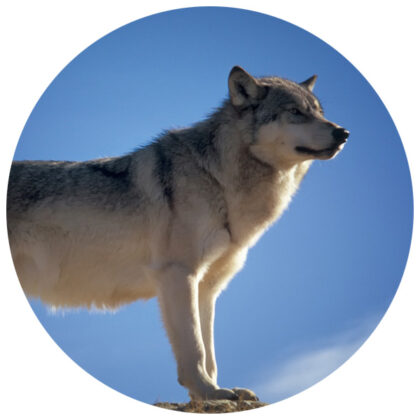 The European wolf lived (and lives again!) in rather small packs. Therefore, its prey also looks different than that of the Canadian wolf, for example. The Canadian wolf lives in much larger packs, and its prey is correspondingly larger, since the Jagt-Verbund as hunters is also able to kill larger animals (caribou, elk, bison, etc.).
The European wolf lived (and lives again!) in rather small packs. Therefore, its prey also looks different than that of the Canadian wolf, for example. The Canadian wolf lives in much larger packs, and its prey is correspondingly larger, since the Jagt-Verbund as hunters is also able to kill larger animals (caribou, elk, bison, etc.).
“Our” wolf hunts: red deer, roe deer, wild boar, with easy access also sheep and goats, occasionally also smaller mammals. It is now part of the game to deal with the diet of its prey, depending on the season. For example, red deer mainly eat grass, herbs, berries, mushrooms and forest fruits such as beechnuts, chestnuts and acorns.
The winter time is also rather “lean” for the wolf, but it does not harm them or our dogs, on the contrary. A constant 100% utilization of the digestion is rather counterproductive – fasting as a recovery for the body is recommended for us humans by nutritionists, for example, but there is a lot of originality behind it. The few (original) peoples that still exist are perfectly healthy as long as they have no contact with us. And the wolf or the wild dog are also perfectly healthy as long as they have no contact with us. We eat what nature provides. Less in winter, but you can feast again from late spring. Works for millennia, why for God’s sake want to change? But of course every dog is happy about one or two reward treats 😊 That should be granted to him and promotes the relationship.
Short to the poop: How about the poop? Yes, you read that right. Aren’t people happy when they have healthy bowel movements once a day? Then all is right with the world!
However, it should not be more than twice a day for the dog and sometimes hard, sometimes soft is not ok. Interesting to know that the wolf does not defecate every day (just like the originally living human). On the one hand it is due to the rather irregular food intake, but above all it is due to the fact that faeces consists of contents that the organism cannot fully utilize (with the exception of important dietary fibers). A somewhat spicy topic, but an originally living Aborigine had two, at most 3, bowel movements a week and then only something, quite hard, almost only roughage. It is very similar with many wild animals and also the wolf. The digestive system of our dogs is unnecessarily taxed by a predominantly industrially produced and regularly available food supply. Food that is actually supposed to strengthen weakens the immune system, for example, because the organism is only busy with digestion. A dog is not a cow that digests almost around the clock – neither is a human, by the way.
The seven pillars of Barfen
There are also different concepts for BARF and they are as individual as each dog. But the 7 pillars have proven to be a good basic building block for my dogs. It is important to know that your dog is basically quite undemanding when it comes to his diet. Everything else arises exclusively from the human understanding of nutrition.
How much food does a dog need (regardless of what it needs)?
An adult dog about 2% of body weight daily. Puppies from the 8th to the 24th week about 6%, from the 25th to the 34th week about 5% and from the 35th to the 52nd week about 4%. These are only guidelines. As I said before, every dog is individual and has its own metabolism. Very simple rule: if he decreases, he gets more and vice versa. But never less than 2%.
The seven pillars include: 1. Meat, 2. Vegetables, 3. Fruit, fruits & berries, 4. herbs, 5. offal & egg, 6. Calcium & minerals (bones) and 7. oils & fats.
The meat & Innards
An adult dog gets it in the ratio 70% (meat and bones) to 30% (vegetables etc.). Actually, our dog can eat almost any meat. The exception is raw pork. Although pork can be digested without any problems, it could contain the so-called Aujeszki virus. If the dog shows the following behavior after eating pork: aggressiveness, restlessness or listlessness, vomiting, diarrhea, itchy ears and nose, or even signs of paralysis and breathing problems, then off to the vet. But let’s make it easy for once: Pork is a NO GO for the dog!
The following types of meat are acceptable:
Beef, poultry, game, offal, fish, horse meat, kangaroo meat.
The following giblets + egg can be fed:
Lungs, Liver, Spleen, Kidney, Pancreas and Heart. They are responsible for part of the vitamin supply. Approx. 15% of the amount of meat daily or weekly, but please never feed only offal, this can lead to diarrhea. On top one or two eggs a week. The egg yolk can also be fed raw, the egg white only when cooked.
Wait, almost forgot the tripe. No, but it’s worth mentioning.
Rumen contains many important nutrients. If you don’t know what that is, the rumen is the largest of all three ruminant rumen. The green tripe is unwashed or just pre-washed. It still contains some plant-based ingredients. Green tripe contains: vitamin A, vitamin E, vitamins B1 to B12, vitamin C, vitamin D, vitamin E, iron and fluorine. However, there are differences: raw and green tripe is healthier than white and cooked tripe. It’s also true that tripe from cattle that’s allowed to graze contains more good nutrients than if the cattle were fed cheap concentrate feed.
Unfortunately, the downside of tripe is the stench, but there are worse things and the dog loves it!
The bones (calcium/minerals)
First of all: Please never give cooked bones, they become porous and brittle. Under no circumstances should poultry bones and small animal bones be eaten, as they splinter easily. This can cause tooth fractures and cuts in the mouth or intestines (life-threatening). 10 to 15% of the amount of meat is fed daily with bones. And if you didn’t know, chewing has a calming effect on the dog, it also cleans the teeth (but bones alone are not enough for this), absorbs nutrients and gives it something to do. At least he won’t nibble on shoes or furniture 🙂 Chewing is important for the dog, it even releases endorphins! Anyone who now thinks their dog is too small and tender for bones, or for good reasons, such as bad teeth (whether or not why), can alternatively feed them eggshells or bone meal. The dog’s weight x 0.05 x 100 : calcium content. An eggshell, for example, weighs about 10 g and contains 37% pure calcium. If you grind or grind them into small pieces, you get about 2 teaspoons of powder.
The vegetables
Vegetables are also healthy for dogs and should definitely be included in their feeding. The wolf ingests it through the contents of the stomach and intestines of the prey. It contains many valuable micronutrients such as vitamins, minerals and carbohydrates and fiber. But it is important to note that the digestive system is not actually designed for raw vegetables. If the dog develops flatulence, it is advisable to purée or lightly pre-cook the vegetables beforehand. PSEUDO grains such as amaranth, buckwheat & Suitable for quinoa.
The following vegetables are fine: Spinach, carrots, pumpkin, beetroot, lettuce, zucchini. Please avoid nightshades such as potatoes, tomatoes or peppers.
Potato: The above-ground fruits of the potato plant are basically harmful to health. But the toxic substances of the fruit are also contained in the potato (albeit in very small amounts). However, if you fed a dog food containing potatoes all its life, there would be a great risk that the toxins would be stored in the body. Glycoalkaloids (α-solanine and α-chaconine) have the property of damaging the intestinal villi and the intestinal wall, among other things. This greatly reduces digestibility and feed intake. Glycoalkaloids are heat stable and remain intact even when cooking. Added to this is the starch, which consists of complex sugars. Yes, but my “expert” says that potatoes are not harmful. There we go again, one way or another, let’s make it short for everyone: Potatoes don’t belong on the wolf’s diet list.
Fruit, fruits and berries
The wolf also gets these from the stomach and intestines of its prey. Fruit contains many vitamins and minerals, as do berries and important antioxidants. Please pay attention to the ripeness of the fruit. Unripe fruit is harmful, please feed ripe to overripe. Do not feed stone and pome fruit whole. The stones and cores contain toxic hydrocyanic acid.
The following varieties are well suited: pear, apple, banana, pineapple (in moderation), beetroot. Apples in particular contain the important dietary fiber pectin. Blackberries, strawberries, raspberries and currants always work. For the sake of completeness, hazelnuts, walnuts, peanuts and cashew nuts are also suitable (unsaturated fatty acids and important trace elements). Plums, mirabelle plums and damsons are among the fruits that dogs should eat only occasionally. The fruit skins are difficult to digest, can ferment in the intestine and have a laxative effect. Taboo are: avocados, grapes and raisins, lemons, macadamia nuts, almonds, especially bitter almonds.
Herbs
The wolf also ingests herbs through the stomach and intestines of the prey. Some are important sources of roughage, others are rich in minerals and yet others are excellent medicinal herbs that can be of particular benefit to the dog. That doesn’t mean tearing open the herbal box and getting everything out that is possible. Herbal knowledge is very extensive and nothing for just in between and into the bowl. But that would go beyond the scope of the article, so here are some herbs that can be fed to a modest extent: nettle (Urtica), fennel (Foeniculum vulgare), chamomile (Matricaria chamomilla), dandelion (Taraxacum), marjoram (Origanum majorana), Oregano (Origanum vulgare), parsley (Petroselinum crispum) and rosemary.
Oils and fats
The dog gets its energy from fats, it should not only be provided by proteins. Good oils such as fish, krill, hemp, linseed and other vegetable oils provide the dog with the important omega 3, 6, 9 fatty acids. They supply the immune system, the heart, the joints, the skin and the entire organism. A dog of around 15 kg needs about 1 teaspoon per day. But that doesn’t cover all the fat needs. 8 to 10% (depending on the activity less or more) of the fat should be fed with sheep or horse fat, for example. Observe the droppings, if they become too soft, then less.
That’s basically it, it’s not difficult at all, is it? Yes, but I don’t have time. You can prepare a lot of it, it’s less time-consuming than you think. Ok, for the time-driven among you, at the bottom there is also a feeding tip from me 🙂
What about dairy?
I get asked this question often. Here the human being is acting on his own again. Dogs generally do not tolerate lactose (like most of us, by the way). If the dog hasn’t had milk since he was a puppy, he may get diarrhea. That depends on the lactose content. Cottage cheese and cottage cheese do not contain so much and can be given in small amounts, although it is not necessary. But if it makes you happy.
Diet for overweight dogs
 So your dog is too fat. Great, you did well. Not only humans, dogs can be overweight too. And just like us, it’s unhealthy. What could be the reason? It is primarily due to industrial wet and dry food, too many and unsuitable treats and a lack of exercise. You can get that under control with a BARF diet and lots of exercise. Industrial dry food in particular often has a far too high proportion of carbohydrates, which are polysaccharides. It’s also cheaper for the feed manufacturer to shoot in cheap fillers such as corn and grain than high-quality content. This way he gets to the selling weight faster and the dog doesn’t ask questions (but master and mistress usually don’t either). Wet food often contains artificial flavoring and attractants. So the dog is still hungry even after feeding. Greetings from McD and an armada of food chemists. Yes, and the many treats that are given with good intentions are mostly rubbish. So now I’ve said it once.
So your dog is too fat. Great, you did well. Not only humans, dogs can be overweight too. And just like us, it’s unhealthy. What could be the reason? It is primarily due to industrial wet and dry food, too many and unsuitable treats and a lack of exercise. You can get that under control with a BARF diet and lots of exercise. Industrial dry food in particular often has a far too high proportion of carbohydrates, which are polysaccharides. It’s also cheaper for the feed manufacturer to shoot in cheap fillers such as corn and grain than high-quality content. This way he gets to the selling weight faster and the dog doesn’t ask questions (but master and mistress usually don’t either). Wet food often contains artificial flavoring and attractants. So the dog is still hungry even after feeding. Greetings from McD and an armada of food chemists. Yes, and the many treats that are given with good intentions are mostly rubbish. So now I’ve said it once.
Obesity affects the bones and joints, the cardiovascular system and the organs. Too little exercise leads to constipation. The stress on the joints can promote osteoarthritis and arthritis and have a negative impact on a whole host of other health processes. Bottom line: If your dog is too fat, it’s your fault, now make sure you get it under control again. But a man with no belly… stop, please don’t do that stupid stuff.
Simple calculation: Calorie intake and calorie expenditure must be in balance. How exactly does that work? You have to deal with the topic, also e.g. with the help of a nutritionist. Unfortunately, veterinarians are not always sufficiently trained for this, they simply have other qualifications. And please don’t tell me again, I don’t have time to take care of it. Acquiring the basics is not difficult and also not time-consuming, there is enough literature and information (e.g. calorie calculator) on the Internet – and as I said, there are also good nutritionists for dogs. On our own behalf: In addition to our feed check, we will soon be offering complete nutritional advice.
Other factors
However, there are some other reasons as well. Due to pain in the joints and limbs, older dogs in particular can no longer move much, and their metabolism and immune system naturally decrease. It can also be the thyroid or a weak cardiovascular system. As a layman, you should go to the vet or an animal naturopath before starting a diet. There they examine what possible diseases could be the causes. Depending on the state of health, the diet can be tackled more or less quickly. A canine nutritionist can also work with you to create a feeding schedule. This is the fastest way to learn. Basically, the diet is simple. With a BARF diet, it is also important to reduce body fat and, on the other hand, to maintain muscle mass. Simply reducing the previous, one way or another unsuitable, dry food does not bring healthy weight loss.
Disadvantages of ready-made wet and dry food
I could write a book about this, maybe I will. Summary: The preservation of industrial feed (90% of all feeds are such) takes place mainly by heating. In the process, important nutrients are destroyed and these are replaced by artificial additives (disguised as “nutritional additives”). In addition, there are cheap fillers such as corn and cereals (sugar suppliers and absolutely unsuitable for dogs), undeclared meat (e.g. fresh meat means nothing at all!!) and undeclared animal by-products, both of which are often slaughterhouse waste.
The feed industry is a market worth billions, unfortunately dogs are fed when they are ill, the veterinarian is happy, for example, about tartar customers and the pharmaceutical lobby about the sale of medicines (by the way, many medicines for dogs come from human medicine, different packaging and that’s good). Veterinarians are now in the rarest of cases also certified nutritionists, because that is not part of the course. If you also sell dry food from the well-known and notorious brands, caution is advised! Here the animal feed industry lures with high commissions, Mercedes and holiday homes want to be paid for. For example, properly trained vets would never recommend a kibble, let alone sell it!
Many intolerances and diseases also have their origin in industrial feed, so some TAs are happy to recommend a special feed for intolerances or overweight. Where do you get this? Of course, also with an industrial feed manufacturer. Only a sick customer is a good customer and we work hand in hand to ensure that it stays that way. Sad, but unfortunately often a fact!
Wet and dry food is of course a cheap and time-saving feeding method. It is best to compare dry food with a ready-made pizza. Dry food can also contain food mites and mold, which can trigger intolerance. Itching, dandruff, dull coat, bloating, diarrhea, tooth and gum disease, bad breath, urinary gritty, kidney problems, diabetes etc etc. But mine is cold pressed and all natural. Pffff, cold pressed doesn’t mean it’s healthy. Are you familiar with the manufacturing process? Rather not. Look at the declaration if you can explain everything to me point by point, e.g. hydrolyzate, meat meal, poultry protein, dried beet pulp, lignocellulose, monocalcium phosphate, fructo-oligosaccharides, apple pulp, locust bean flour, inulin, corn gluten, carrageenan, potassium chloride and why they are many artificial additives (also disguised as nutritional additives), then I ask you why you are still doing this to your dog. Do you know how meat has to be declared correctly? But my food is grain free. Is that all you can think of to justify it as healthy food? If you can’t explain all this to me in a nutshell, you fell for a feed manufacturer’s marketing ploy or trusted the wrong recommendation. If you are unsure what no one can blame you for, please ask me!
Dry food damages (not only) the teeth
A dog can go without food for up to two weeks, no problem. A water shortage of 10% or more is fatal in many cases. Dry food dries out the dog, the food absorbs any liquid, which in turn sets a spiral of disease in motion. “But my dog drinks enough.” I hear that every day. When fed with dry food, a 10kg dog would have to drink about 2.5 liters of water per day. The constant lack of water that the dog “endures” leads to all kinds of diseases. The widespread renal insufficiency finds its reason in many cases here. Unfortunately, dogs can endure this for years.
Dry food has a very long residence time, up to 14 hours. In the worst case, the intestinal mucosa is attacked and leaky gut develops. The gut becomes, nutrients leak through the gut wall and are attacked by the immune system. Feeding dry food can cause numerous chronic degenerative diseases, autoimmune diseases, allergies, kidney damage, pancreas and liver problems. The cancer rates are not only increasing significantly in humans, but also in our pets, even hereditary factors are permanently changed by a wrong diet. This creates a long-term problem, the consequences of which we have not yet been able to properly assess.
The dog is not designed to digest dry food. The manufacturing processes that dry food goes through make it a very unhealthy meal for your dog.
On the teeth: Feeding dry food also changes the pH value of the saliva. The food, which is much too dry, absorbs the liquid from the dog, resulting in much more concentrated stomach acid. Stomach acid has an influence on salivation, so that it also has a high pH value. This in turn damages the teeth and gums and promotes tartar. In addition, ready-made dry food usually has a far too high proportion of carbohydrates. Grains, corn and starch in general are also converted to sugar and this is also responsible for tartar. A lie from the feed industry: dry food cleans your teeth. What nonsense.
I could go on writing endlessly, because the most frightening disadvantages and ingredients hardly find space here. Flavor enhancers, attractants, preservatives, artificial additives of all kinds and poor quality protein sources are typical of industrially manufactured dry food. Interesting to know that the usability of dry food is around 30 – 40%. My dog makes such great piles of the food, finally a food that he tolerates. Fine, on the one hand additives ensure the consistency and on the other hand there is 60 to 70% of the pile that cannot be used. Show me your dog’s feces and I’ll tell you immediately whether you feed your dog appropriately or not! Did you feel caught in my sentences about the faeces, have a lot of catching up to do when it comes to nutrition! Yes, a dog can indeed endure a lot before it dies of cancer or something and not because of its age.
But there are also alternatives – fortunately
For whatever reason BARF is not an option for you and you have really good reasons for it, such as an unforeseen drastic change in your life that robs you of time, an illness (which I hope not) or whatever serious, that you couldn’t take into account before you bought a dog, fortunately there is a food manufacturer that I can recommend to you with a clear conscience: Anifit. Please take a look, we are Anifit Partner out of conviction and our certified nutritionists put their hands in the fire for the feed quality. Natural, species-appropriate, with precisely declared ingredients and sources of raw materials and free from unwanted additives. After BARF, Anifit is one of the “good guys” who really care about the health of your dog.
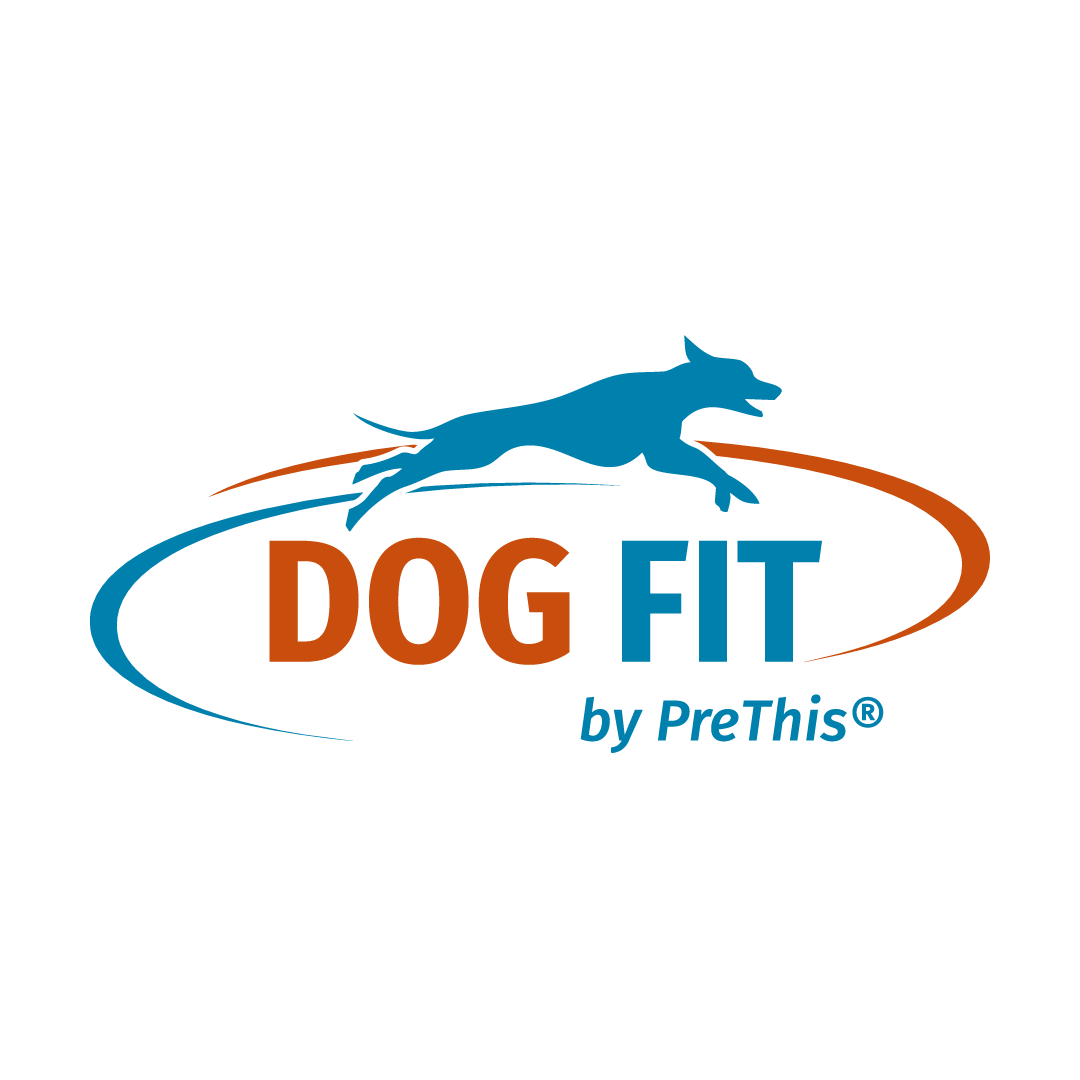
The content of the articles is for general information purposes only and does not replace diagnosis or treatment by a veterinarian. Reviews or testimonials are individual reports from verified customers. This information does not constitute medical advice and should not be understood as such.
Our daily inspiration comes from the special moments with our dogs. Here we share this enthusiasm and invite you to become part of the DOG FIT community on our social media channels.
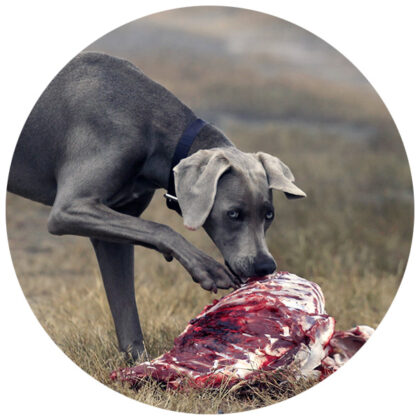
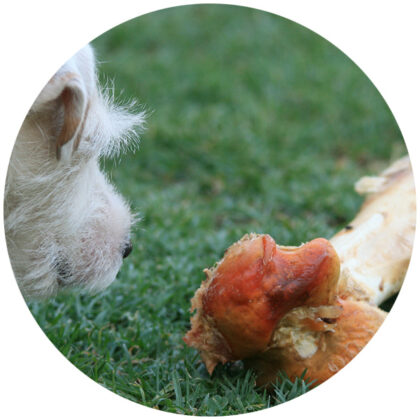
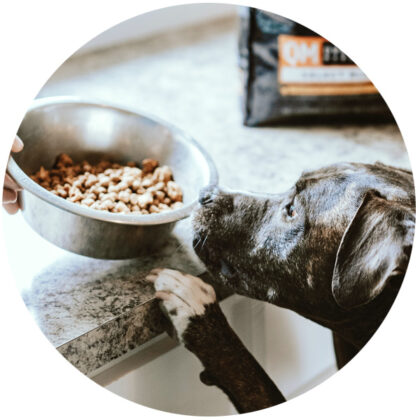

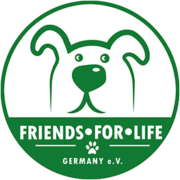
Leave a Reply